The other day, I went to Corfe Castle. I haven’t been since I was eleven or twelve, on Guide camp and all I remember of it is that I have the badge on my camp blanket as evidence.
So it was definitely time to go back. Normally I’d park at Norden park & ride and take the steam train three minutes down the line to the village but there’s a plague and although the train’s still running, you have to do Norden or Corfe all the way to Swanage, and you have to book at least a table for two. So I parked at Norden anyway and did the five or ten minute walk through the woods and across the crossing with the good castle view.
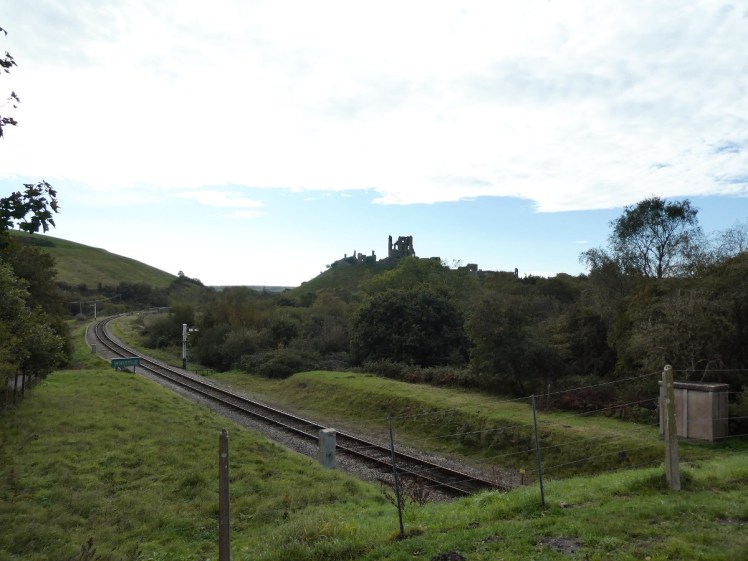
When William the Conqueror came along in 1066, he immediately started a programme of cathedral-building. Because castles aren’t really my specialist interest, I didn’t know he also built 36 castles, among them Corfe. There was a Saxon hall here already – probably right on the very hill where the remains of the castle now stand – and this is where the swirling chaos of history started to whirl around me.
The hall belonged to Ælfthryth, known around Corfe as more simply Elfrida. She was the third wife of the Saxon king Edgar the Peaceful, mother of my beloved Æthelred the Unready – oh, and murderer of King (Saint!) Edward the Martyr, who was poisoned and then stabbed right here in March 978.
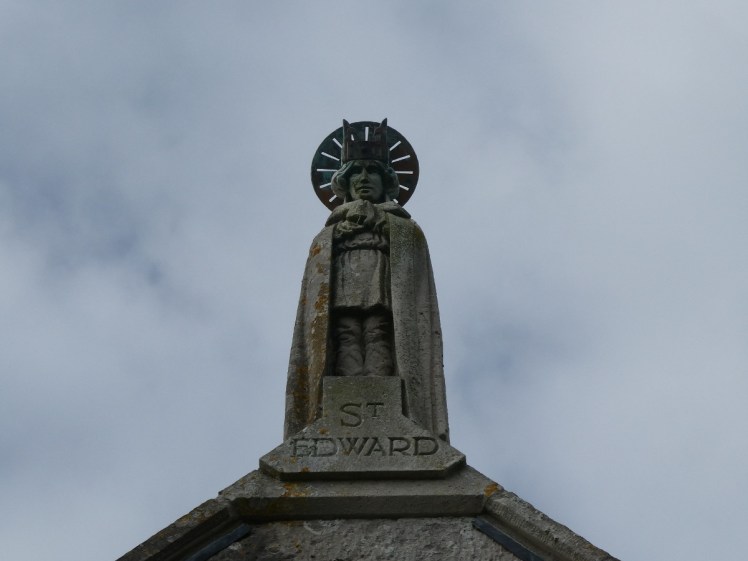
So 90-100 years later, the castle came along. It was a high-status castle. It was stone, in an age where even fortresses were more commonly wooden and I imagine, much to my astonishment, that William spent quite some time here. He liked the hunting in Purbeck, apparently, and his son Robert of Normandy is listed as an “evil inhabitant” on the seasonal trail leaflet I picked up. Quietly Halloween-themed, I guess, to set up a trail of wooden shields relating the tales of evil and malice in this place. Robert wasn’t especially evil – he was William’s oldest son but never gained the throne, unlike his two younger brothers, Henry I and William Rufus. He did the usual, besieging, attacking armies, trying to steal his brother’s crown etc and eventually Henry locked him up.

Other Evil Inhabitants include the aforementioned Elfrida, as well as King John (held his niece, Eleanor of Normandy, prisoner for most of her life, some of it right here, and starved to death her 25 personal French knights), King Stephen (started The Anarchy to defend his claim to the throne from his cousin Empress Matilda’s claim – Matilda’s would have been more valid had she not been a woman) and Colonel Pitman, who we’ll come to later.
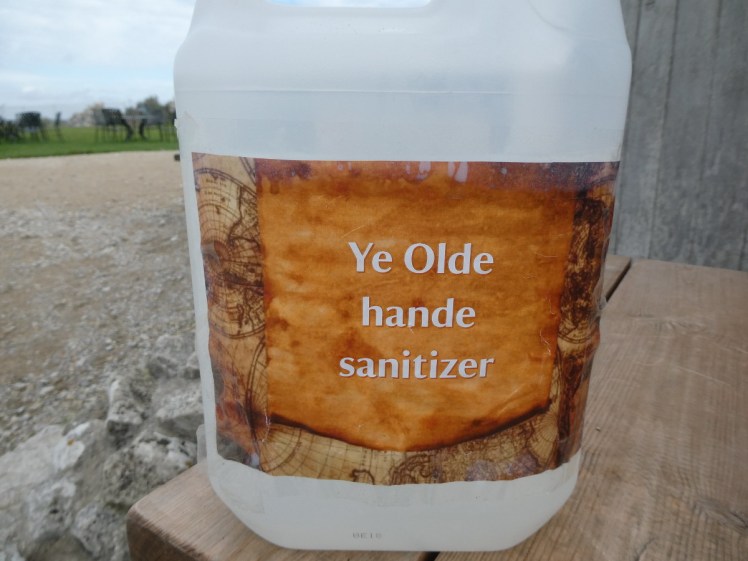
These Evil Inhabitant shields are scattered around the castle. They’re not in chronological order so you get flung backwards and forwards in history. But they’re temporary and they’re wound around Corfe’s big and permanent history lesson, Lady Mary Bankes, so right now you get your timelines well and truly tangled.
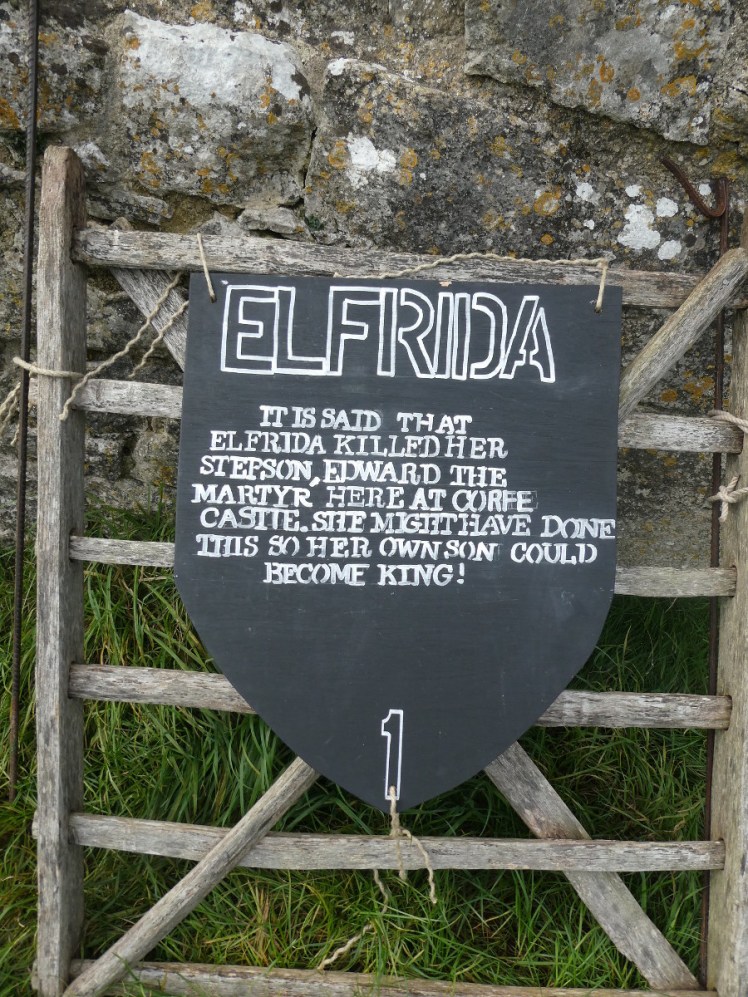
Corfe Castle, as I said, was a fortress, a high-status genuine defensive structure, prison and royal residence. Eventually Elizabeth I inherited it and sold it to her Lord Chancellor, Sir Christopher Hatton. He left it to his nephew, Sir William Newport/Hatton and William’s widow married Edward Coke who in turn eventually sold Corfe Castle to Lord John Bankes, local landowner, Attorney General and Chief Justice to King Charles I, as a fantastic country home in 1635. Their story starts in 1643, during the English Civil War.
The Bankes’, obviously, were Royalists and Corfe was among the last bastions of Royalism in the county. The Parliamentarians were drawing in. Lord John was summoned to the king in Oxford and while he was away, Lady Mary held the usual May hunting party instead of enjoying her country home’s defensive capabilities and battening down all the hatches. A woman, alone, in the open? The Parliamentarians attacked immediately! The Bankes’ household fled for home, literally slamming the great gates on the enemy’s nose, in a great piece of drama for listeners nearly four hundred years later.

The first siege was short. Mary gave up the four small cannons on the terrace and the Parliamentarians left, returning the next month, which gave Mary time to stock up to face the second siege. Initially there had been little more than Mary’s household and five soldiers. By the end of the second siege, there were eighty men inside defending Corfe Castle and 600-odd in the massed ranks of democratic England roaring outside but Mary held the castle. By the time they were rescued by Royalist forces, six weeks later, two Corfe-ites were dead, compared to one hundred Parliamentarians. Lord John returned, congratulated his wife on her fortitude and “they had a loving reunion” to quote the guidebook”. Or to put it more bluntly, as the various speakers scattered around the castle put it, “their tenth child was born nine months later” – their son William Bankes, born in June 1644.

But that wasn’t the end! John died and in 1646, the Parliamentarians returned. Mary was really defying them now, still obstinately Royalist and more than a match for an army. So a third siege ensued. And she lost. Remember Evil Inhabitant Pitman? He left the castle for reinforcements from Somerset and returned with 100 Parliamentarians in disguise. He let them into the castle where they mingled harmlessly for a few hours. Then the Parliamentarians outside attacked and the traitors within attacked from the inside. The Bankes household had no chance. Corfe, at last, fell.
I saw a lady sitting by Pitman’s shield, explaining to a child that “it wasn’t his fault. They were in disguise. He didn’t know. He just didn’t ask the right questions when he opened the door”. Let me stop you right there. He absolutely knew. He sold Mary out big time. He was a traitor and history remembers him as such.

For all she’d infuriated them, the Parliamentarians respected Mary. They let her go free to her other big house in Dorset, Kingston Lacy in Wimborne, and gave her the keys to the castle. They’re still exhibited there today.
The castle itself was “slighted”. That’s a nice word for “destroyed such that it can no longer serve its purpose”. Other castles had all defensive capabilities destroyed but the living quarters left. They left no such opportunities for Corfe. Lady Mary would have been back like a shot, I reckon, if they’d left so much as a single room whole. They blew bits of it up and the villagers helped themselves to the loose stone for their own houses, also ravaged by the sieges. There was no need to fully destroy and remove all evidence of the castle. They’d rendered it unusable and why go to any further effort or expense?

In doing that, reducing Corfe Castle to a ruin, they created something kind of beautiful, something haunting, something more interesting than the surviving entire castle might have been today. When the monarchy was restored in 1660, the castle and lands were returned to the Bankes family. In 1981, Henry John Ralph Bankes died and bequeathed his entire estate to the National Trust – Corfe Castle, the entire Kingston Lacy estate, swathes of the east Dorset countryside, including at least one Iron Age hillfort, Studland and miles of countryside. He left his two children £50,000 each but presumably saved them from a lot of tax and debt. There wasn’t a lot you could do with Corfe Castle by then and by all accounts, Kingston Lacy was in quite a state.

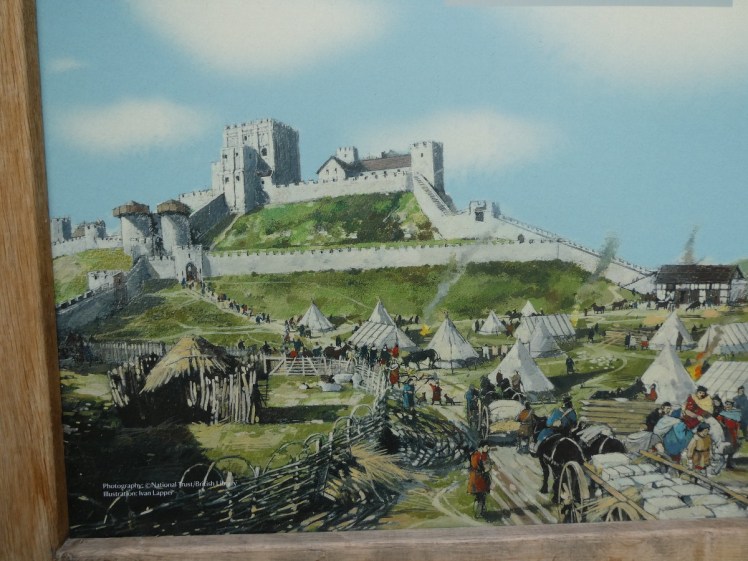
The remains of the 23m keep on top of the tower does look good, especially from a nice viewpoint or in mist or at sunset. But I’d never appreciated how enormous it would have been in the twelfth century, when even castles mostly didn’t get the privilege of stone walls. It was a skyscraper, higher than the villagers could even imagine. And it would have been whitewashed. I’m so used to the grey stone, I’d never considered it being painted. But then you see pictures of what the castle might once have looked like and it was white. So was the White Tower of the Tower of London. In an age when stone had ceased to be a marker of such status, whitewash became the way to show how important your castle was.

Other than feeling bounced around and overwhelmed in the history department (I had to draw a chart of the royals from Cerdic in 519 to Elizabeth today just to make sense of which bit happened when), I really enjoyed my day at Corfe Castle. I ate my picnic in the Old Hall, perhaps on the spot where teenage Edward was killed while young Æthelred watched. I stood at a window where Henry VIII might have presented his various wives, a Tudor Buckingham Palace balcony. I found the remains of a room that the ruins have turned into a sun-trap of a south-facing balcony, with views over the village and the Purbeck Hills and the railway, complete with steam train.
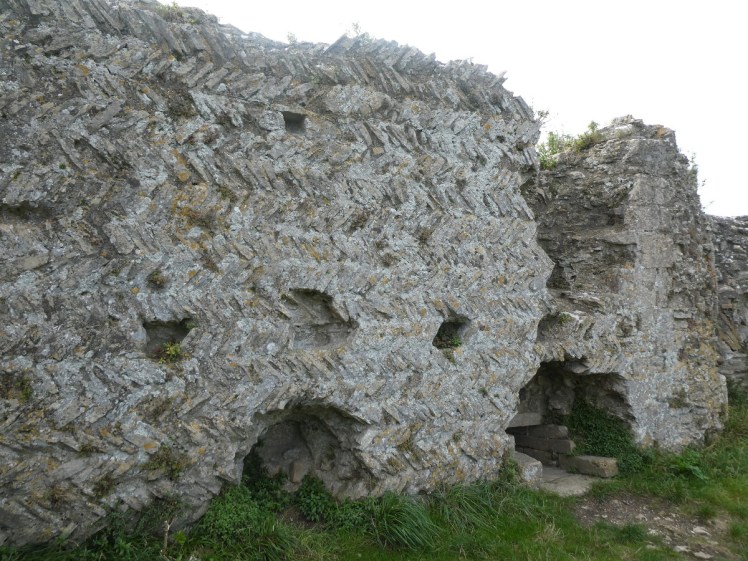



(I became incandescent with rage at the American tourist who described the 87-ton Battle of Britain class “spam can” steam locomotive as “so cute, it looks like Thomas!” and even more so at the gormless local who remarked “Here comes the Hogwarts Express!”. Not everything in this country is from a kids’ book about a wizard at boarding school!! Guaranteed beserk button, that.)
Normally I’d have got on that train afterwards and chuffed off to Swanage but plague. I walked back along the railway line to my car and went to Arne. But that’s another story.
One thought on “Corfe Castle: 1000 years of history (and not in the right order)”